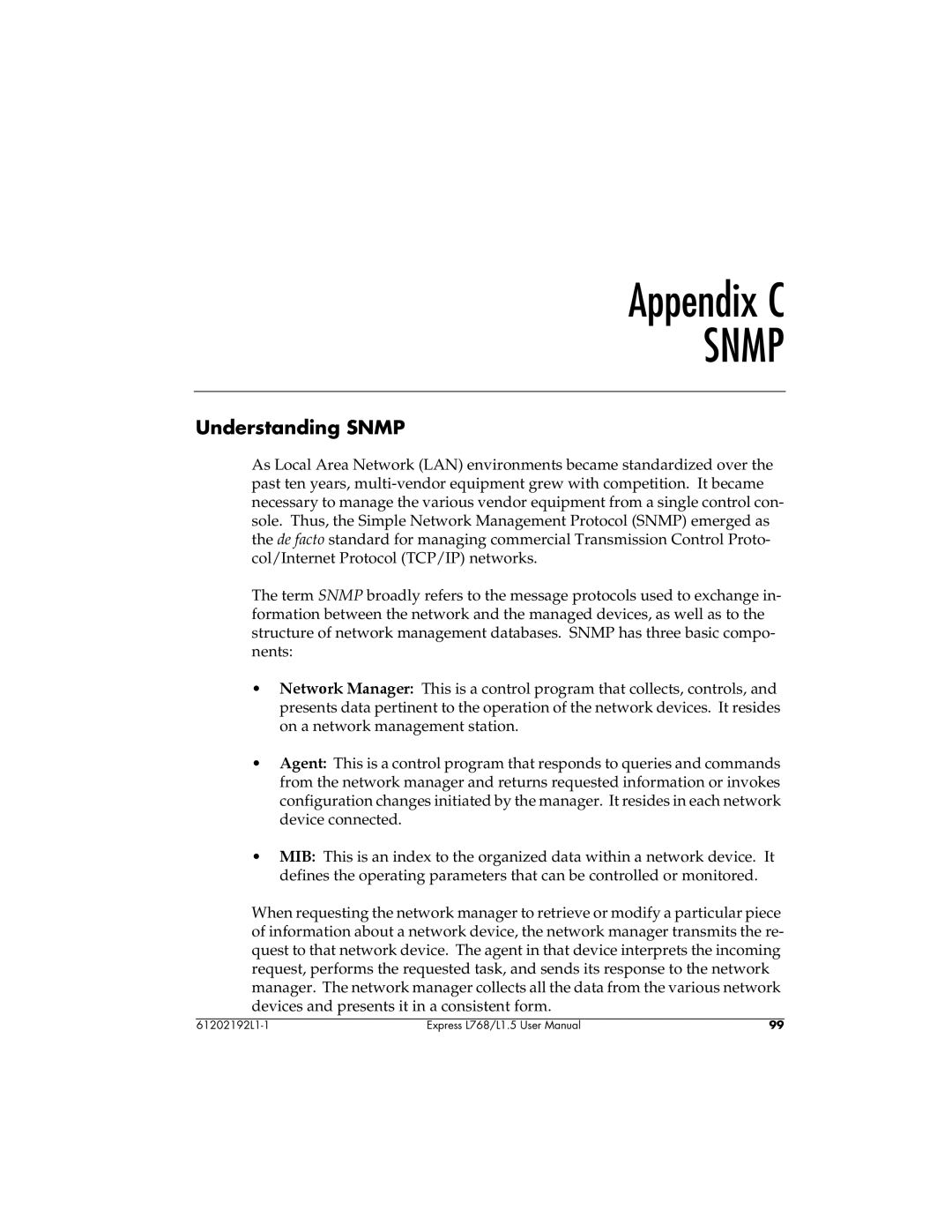Appendix C
SNMP
Understanding SNMP
As Local Area Network (LAN) environments became standardized over the past ten years,
The term SNMP broadly refers to the message protocols used to exchange in- formation between the network and the managed devices, as well as to the structure of network management databases. SNMP has three basic compo- nents:
•Network Manager: This is a control program that collects, controls, and presents data pertinent to the operation of the network devices. It resides on a network management station.
•Agent: This is a control program that responds to queries and commands from the network manager and returns requested information or invokes configuration changes initiated by the manager. It resides in each network device connected.
•MIB: This is an index to the organized data within a network device. It defines the operating parameters that can be controlled or monitored.
When requesting the network manager to retrieve or modify a particular piece of information about a network device, the network manager transmits the re- quest to that network device. The agent in that device interprets the incoming request, performs the requested task, and sends its response to the network manager. The network manager collects all the data from the various network devices and presents it in a consistent form.
Express L768/L1.5 User Manual | 99 |
